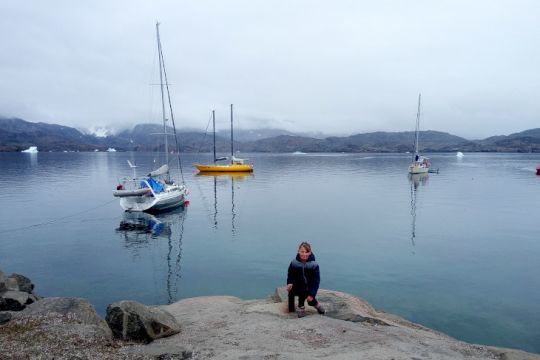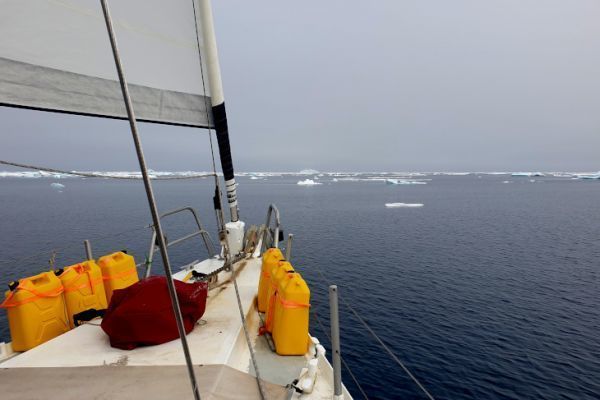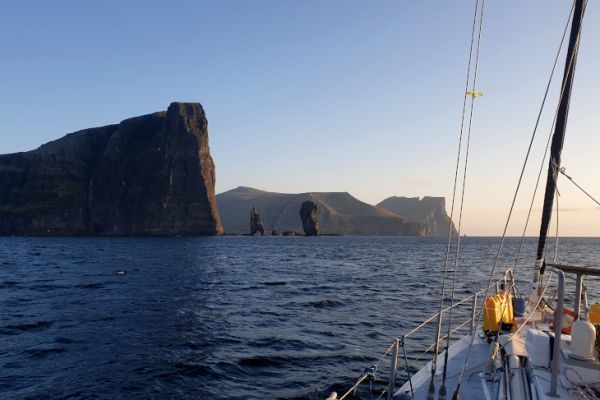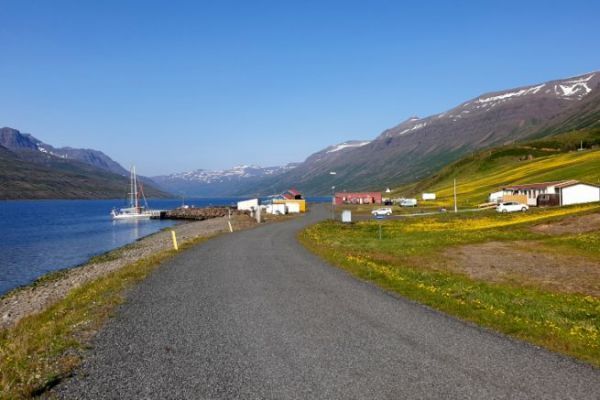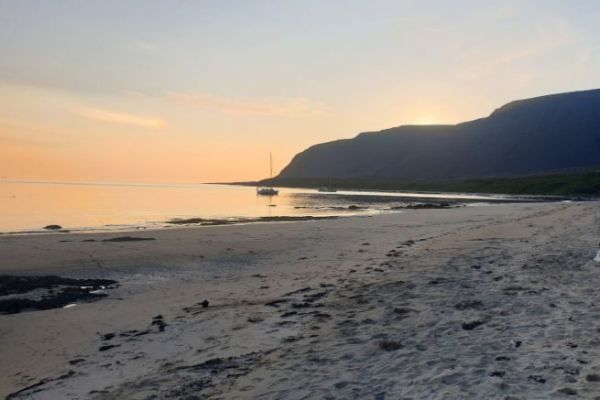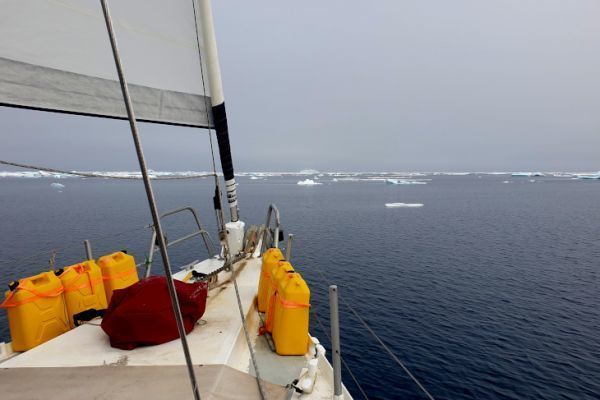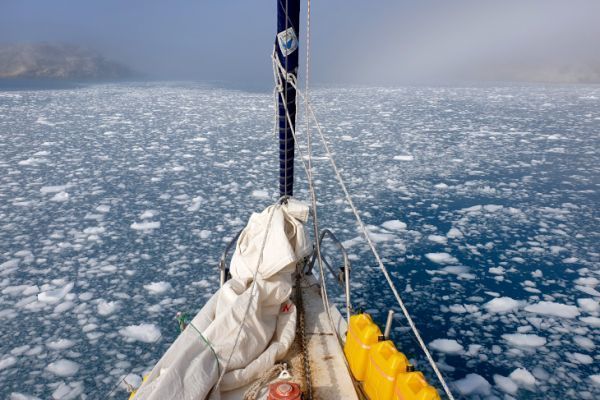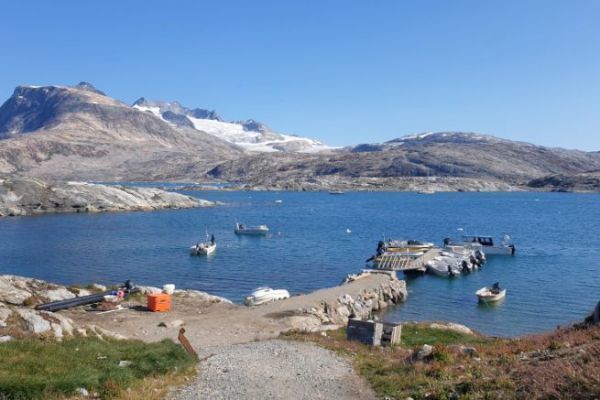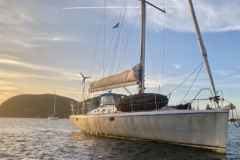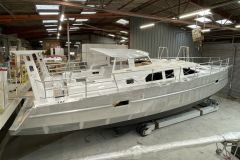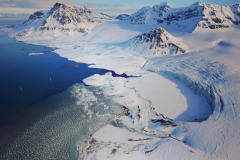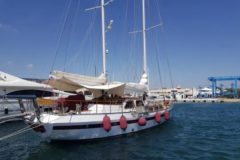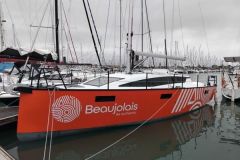When all the signs aligned for a boat crossing between Iceland and Greenland, Arthur completed his preparations and set off on his journey. The crossing promises to be mild, but will not always be straightforward.
Unavoidable departure formalities
For several days now, the ice chart on Greenland's east coast has been improving, at least for the Tasiilaq area opposite Iceland. As for the weather, acceptable windows of opportunity also seem to be opening up.
So we're getting down to the final preparations for the crossing to Greenland: finishing the provisioning and, above all, activating the satellite phone. The latter is essential for retrieving weather information in areas where cell phones are not available.
Of course, this process takes longer than expected. There are dozens of different packages and SIM card types. We start biting our nails as the weather window for the crossing passes us by, due to the lack of iridium. Fortunately, at the last moment, everything unlocks and the satellite phone is finally activated.
We don't dawdle. With the sailboat Friel waiting for us, we finish stowing away, secure the dinghy to the gantry, cook some hard-boiled eggs and vegetables and set sail for Greenland. It's already the second half of July, and the season is well underway.
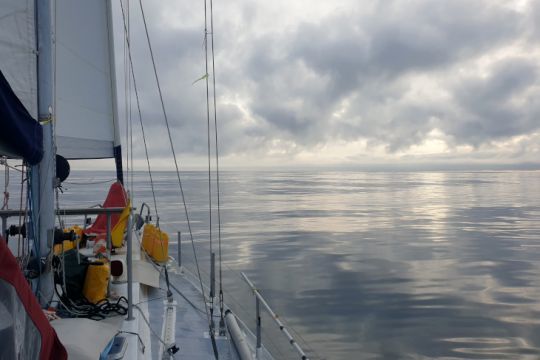
A very quiet start
Leaving in the early evening, the first 24 hours didn't allow us to make much headway, due to the lack of wind. Nevertheless, everything's quiet on Arthur, which is already good. We're also taking advantage of the fact that we're still close to the coast to use the telephone network and 4G.
The children play or read, while Guillaume and I alternate rest periods. This time, we're trying out a new shift pattern, taking turns every three hours, day and night. We'll see if it works for us.
The next 24 hours were just like the first: almost no wind. In two days, we barely made a third of the journey. The big difference with the previous day is that we no longer have access to the Icelandic network, leaving only the satellite telephone. Given the costs involved, we can only use it to check the weather and exchange a few text messages with sailboats crossing like us.
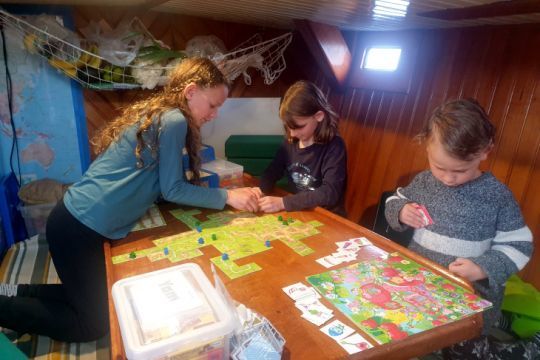
Life on board
We take advantage of the calm to bake rolls, play board games, read and rest. There's likely to be more wind towards the finish, which, along with the ice cream, is likely to be tiring.
Ten-year-old Charlie takes her first shift alone that evening, from 8:30 to 9:30 pm. She carries out her task with great seriousness and enthusiasm. The nights are getting darker. Until a few weeks ago, the difference in light between day and night was barely perceptible. Now, in the middle of the night, the sky begins to darken. You can still see, but it's a sign that time is passing.
The third day was similar to the first. Little wind, a slightly bigger swell. We see our first small icebergs, scattered in the distance. No one is seasick. It must be said that we take our tablets scrupulously to avoid nausea. This could be a pleasant crossing, if only Arthur's engine starter hadn't started to go haywire...
Indeed, when we tried to push the engine a little to catch the wind, the starter emitted a particularly suspicious noise. We're now tense, not knowing whether we'll be able to rely on it at the finish and in the ice.
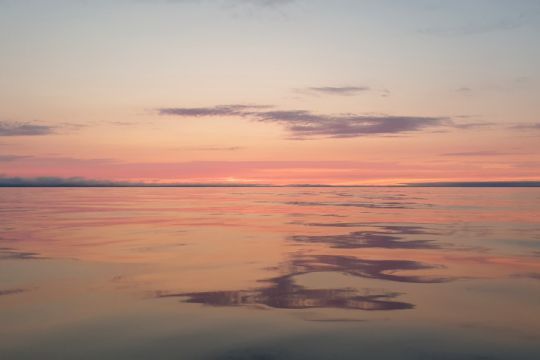
More and more ice as Greenland approaches
On the fourth day, there was still very little wind. And yet, when we left Iceland, the weather forecast for that day predicted a steady wind of up to 25 knots. We now regularly see icebergs all around us and can see the Greenland mountains in the distance.
Temperatures have cooled down to just over 5 degrees. We allow ourselves a few hours on the stove each day, to keep the temperature inside at around 15 degrees. Fortunately, the swell is still very moderate, making for a comfortable ride.
According to our information, we should reach an ice barrier between us and Tasiilaq at the end of the day. We don't yet know whether we'll be able to cross it or whether we'll have to go around it, which would take us an extra day.
Around 7pm, we begin to be surrounded by ice. Icebergs rub shoulders with growlers and many drifting fragments. Fog is also falling, limiting our visibility. After consultation, we decide to put on a cape for the night and cross the ice the next day, hoping that the fog will disappear. This is our fifth night on watch.
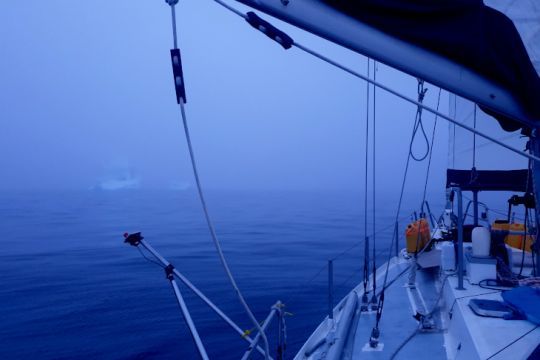
A long night in the ice
That night, time seemed very long. We drift along slowly, but the thick fog forces us to keep a constant watch. We were getting tired. When, at around 5 a.m., we come face to face with an iceberg a few dozen meters away, the adrenalin suddenly kicks in.
In the morning, the ice becomes denser. Visibility improves, and although the sea ahead looks solid and impassable, we decide to attempt a crossing to Tasiilaq. It's the right decision. The further we go, the more we spot open passages between the plates and growlers. We can slalom along under sail.
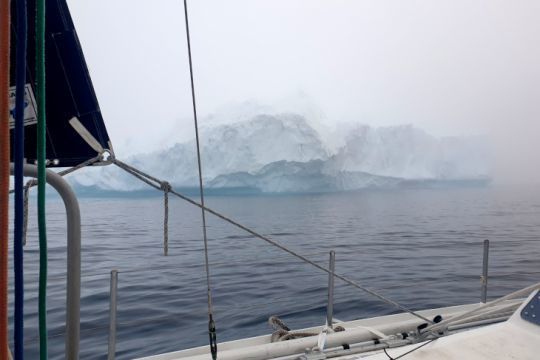
A long-awaited arrival in Greenland
However, we have to steer outside all the time, so we can see the obstacles. The cold is a bit sharp. Guillaume and I take turns at the helm. We take the opportunity to marvel at the fabulous spectacle of these ice sculptures all around us. The colors are marvelous, from ultramarine to turquoise, against a backdrop of rugged mountains.
When we need it, the engine starts after a moment's hesitation, with a creaking noise. It takes us several hours to cross the ice and enter Tasiilaq Bay. On the hillside, houses colored red, yellow and blue slope down to the sea. We anchor next to the port, immensely happy to have finally arrived in Greenland.
